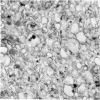Abstract
Mouse peritoneal macrophages in culture exposed to Mycoplasma pulmonis show marked biochemical changes. This micro-organism induces the release of hydrolytic enzymes from macrophages. The release is time- and dose-dependent and is not associated with loss of the cytoplasmic enzyme lactate dehydrogenase or any other sign of cell death. Secretory products of macrophages may play a role in the pathogenesis of chronic inflammatory responses elicited by mycoplasma infections. One of the products of activated macrophages is the complement cleavage product C3a. Purified C3a was incubated with M. hominis, M. pulmonis, Proteus mirabilis and an L-phase variant of this organism. All mycoplasmas and the L-phase variant were lysed by low concentrations of C3a, whereas the bacterial form of Pr. mirabilis was resistant.
Full text
PDF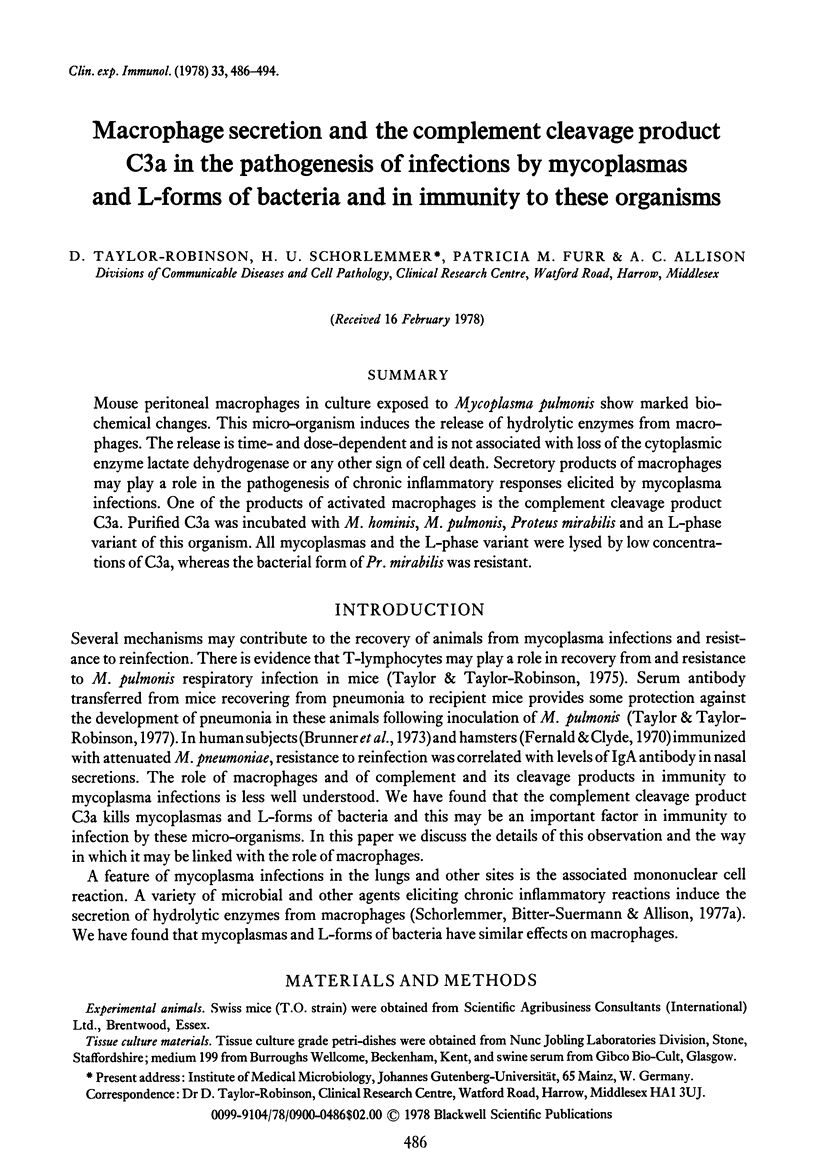
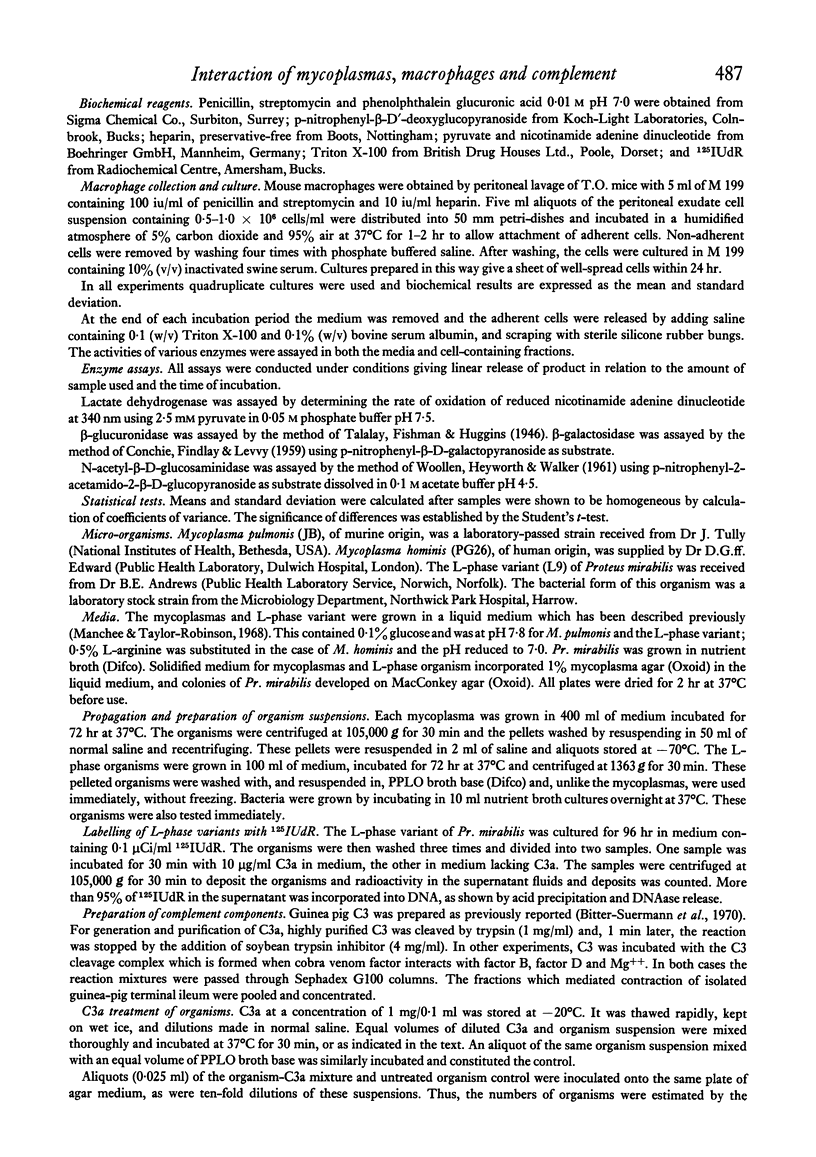
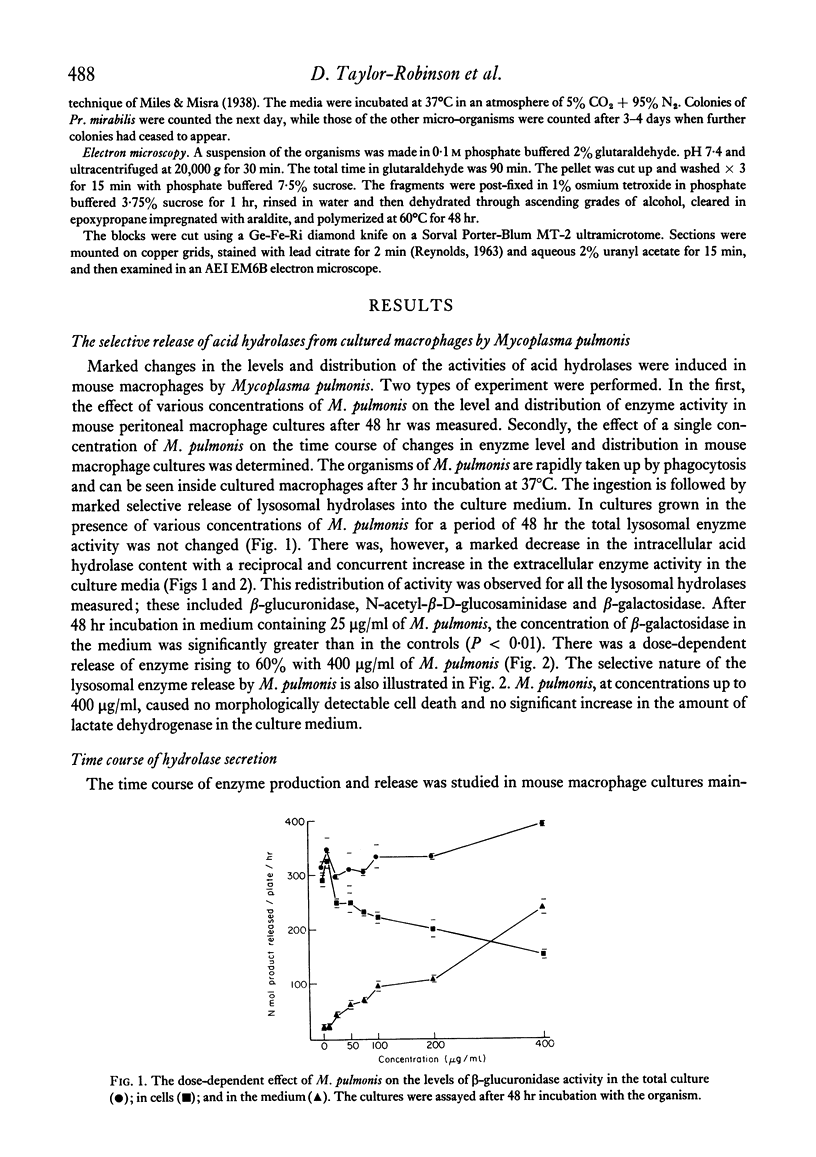
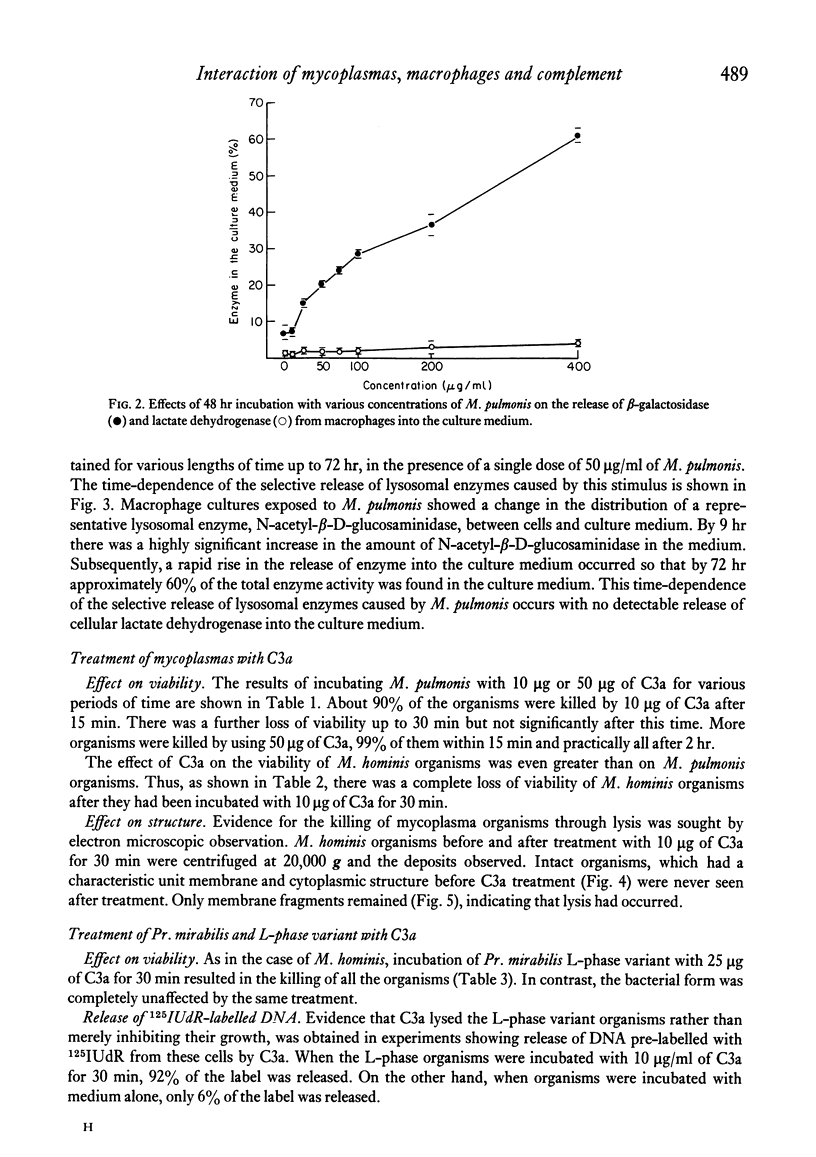

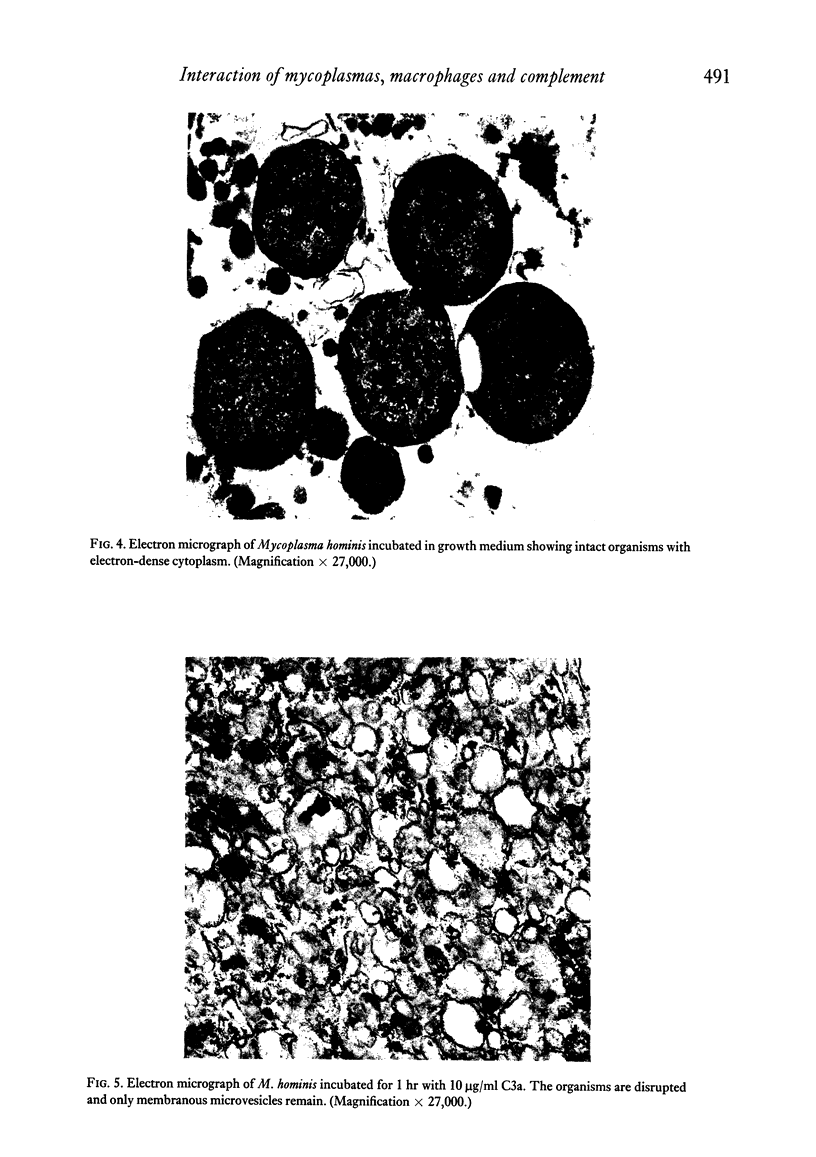
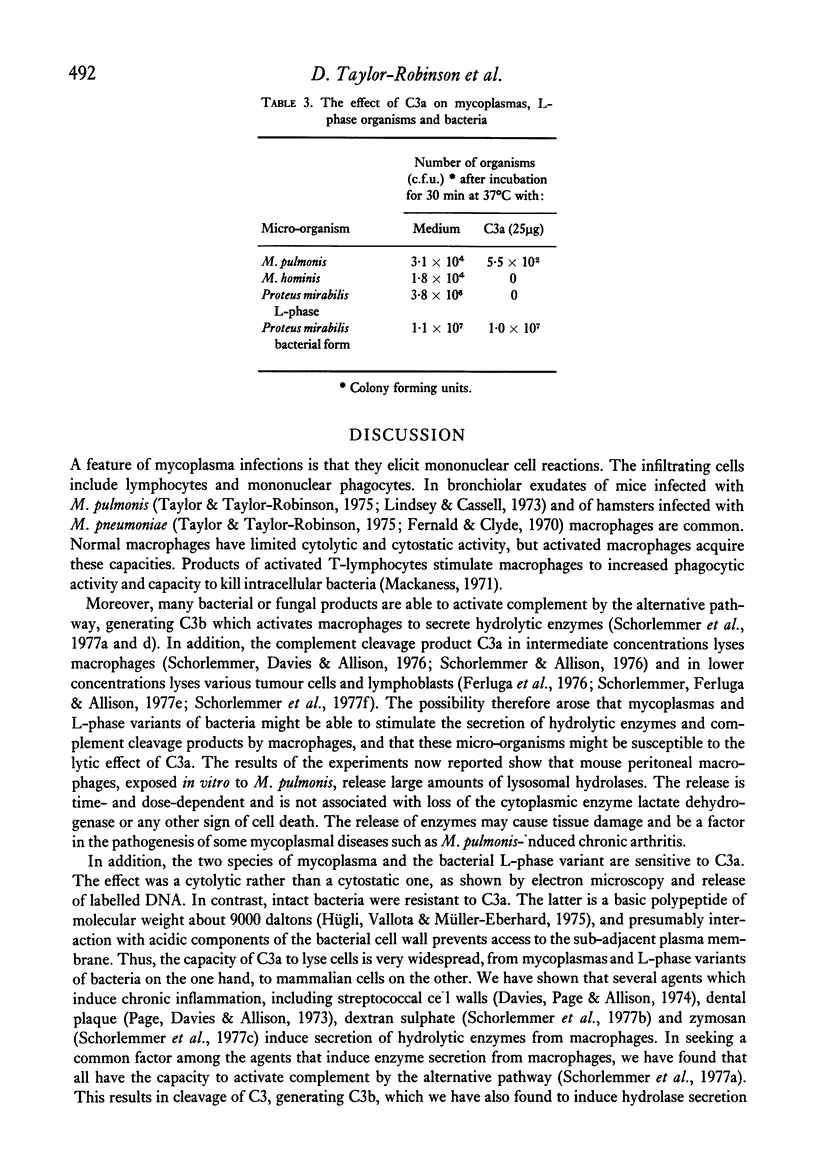
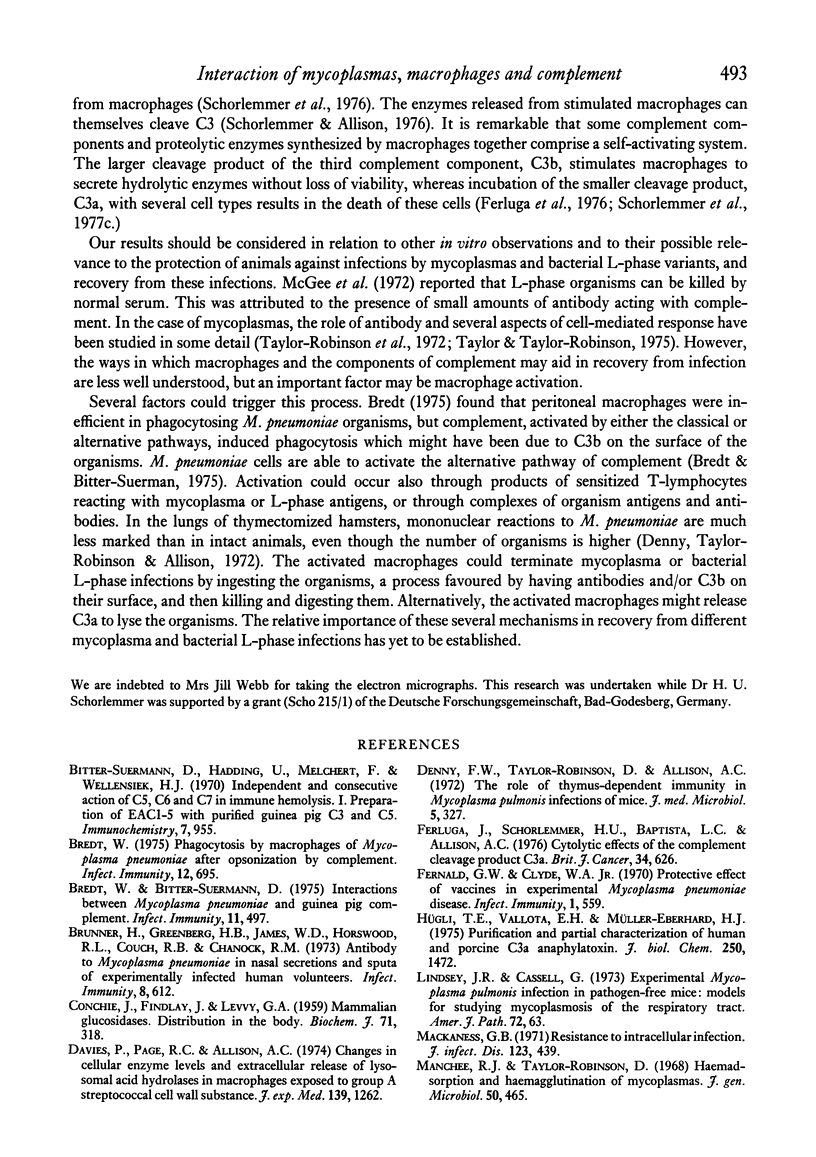
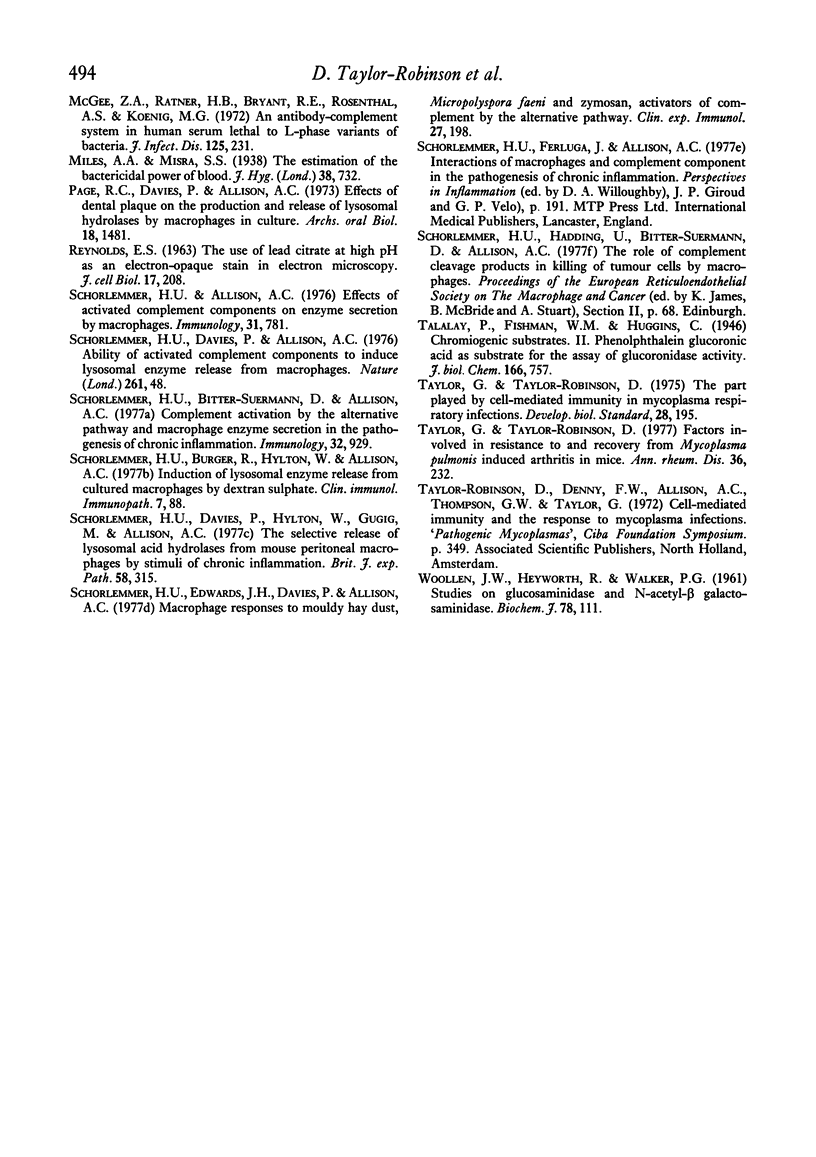
Images in this article
Selected References
These references are in PubMed. This may not be the complete list of references from this article.
- Bitter-Suermann D., Hadding U., Melchert F., Wellensiek H. J. Independent and consecutive action of the complement components C5, C6 and C7 in immune hemolysis. I. Preparation of EAC1-5 with purified guinea pig C3 and C5. Immunochemistry. 1970 Dec;7(12):955–965. doi: 10.1016/0019-2791(70)90002-9. [DOI] [PubMed] [Google Scholar]
- Bredt W., Bitter-Suermann D. Interactions between Mycoplasma pneumoniae and guinea pig complement. Infect Immun. 1975 Mar;11(3):497–504. doi: 10.1128/iai.11.3.497-504.1975. [DOI] [PMC free article] [PubMed] [Google Scholar]
- Bredt W. Phagocytosis by macrophages of mycoplasma pneumoniae after opsonization by complement. Infect Immun. 1975 Sep;12(3):694–695. doi: 10.1128/iai.12.3.694-695.1975. [DOI] [PMC free article] [PubMed] [Google Scholar]
- Brunner H., Greenberg H. B., James W. D., Horswood R. L., Couch R. B., Chanock R. M. Antibody to Mycoplasma pneumoniae in nasal secretions and sputa of experimentally infected human volunteers. Infect Immun. 1973 Oct;8(4):612–620. doi: 10.1128/iai.8.4.612-620.1973. [DOI] [PMC free article] [PubMed] [Google Scholar]
- CONCHIE J., FINDLAY J., LEVVY G. A. Mammalian glycosidases; distribution in the body. Biochem J. 1959 Feb;71(2):318–325. doi: 10.1042/bj0710318. [DOI] [PMC free article] [PubMed] [Google Scholar]
- Davies P., Page R. C., Allison A. C. Changes in cellular enzyme levels and extracellular release of lysosomal acid hydrolases in macrophages exposed to group A streptococcal cell wall substance. J Exp Med. 1974 May 1;139(5):1262–1282. doi: 10.1084/jem.139.5.1262. [DOI] [PMC free article] [PubMed] [Google Scholar]
- Denny F. W., Taylor-Robinson D., Allison A. C. The role of thymus-dependent immunity in Mycoplasma pulmonis infections of mice. J Med Microbiol. 1972 Aug;5(3):327–336. doi: 10.1099/00222615-5-3-327. [DOI] [PubMed] [Google Scholar]
- Ferluga J., Schorlemmer H. U., Baptista L. C., Allison A. C. Cytolytic effects of the complement cleavage product, C3a. Br J Cancer. 1976 Dec;34(6):626–634. doi: 10.1038/bjc.1976.223. [DOI] [PMC free article] [PubMed] [Google Scholar]
- Fernald G. W., Clyde W. A. Protective Effect of Vaccines in Experimental Mycoplasma pneumoniae Disease. Infect Immun. 1970 Jun;1(6):559–565. doi: 10.1128/iai.1.6.559-565.1970. [DOI] [PMC free article] [PubMed] [Google Scholar]
- Hugli T. E., Vallota E. H., Müller-Eberhard H. J. Purification and partial characterization of human and porcine C3a anaphylatoxin. J Biol Chem. 1975 Feb 25;250(4):1472–1478. [PubMed] [Google Scholar]
- Lindsey J. R., Cassell H. Experimental Mycoplasma pulmonis infection in pathogen-free mice. Models for studying mycoplasmosis of the respiratory tract. Am J Pathol. 1973 Jul;72(1):63–90. [PMC free article] [PubMed] [Google Scholar]
- Mackaness G. B. Resistance to intracellular infection. J Infect Dis. 1971 Apr;123(4):439–445. doi: 10.1093/infdis/123.4.439. [DOI] [PubMed] [Google Scholar]
- Manchee R. J., Taylor-Robinson D. Haemadsorption and haemagglutination by mycoplasmas. J Gen Microbiol. 1968 Mar;50(3):465–478. doi: 10.1099/00221287-50-3-465. [DOI] [PubMed] [Google Scholar]
- McGee Z. A., Ratner H. B., Bryant R. E., Rosenthal A. S., Koenig M. G. An antibody-complement system in human serum lethal to L-phase variants of bacteria. J Infect Dis. 1972 Mar;125(3):231–242. doi: 10.1093/infdis/125.3.231. [DOI] [PubMed] [Google Scholar]
- Page R. C., Davies P., Allison A. C. Effects of dental plaque on the production and release of lysosomal hydrolases by macrophages in culture. Arch Oral Biol. 1973 Dec;18(12):1481–1495. doi: 10.1016/0003-9969(73)90124-6. [DOI] [PubMed] [Google Scholar]
- REYNOLDS E. S. The use of lead citrate at high pH as an electron-opaque stain in electron microscopy. J Cell Biol. 1963 Apr;17:208–212. doi: 10.1083/jcb.17.1.208. [DOI] [PMC free article] [PubMed] [Google Scholar]
- Schorlemmer H. U., Allison A. C. Effects of activated complement components on enzyme secretion by macrophages. Immunology. 1976 Nov;31(5):781–788. [PMC free article] [PubMed] [Google Scholar]
- Schorlemmer H. U., Bitter-Suermann D., Allison A. C. Complement activation by the alternative pathway and macrophage enzyme secretion in the pathogenesis of chronic inflammation. Immunology. 1977 Jun;32(6):929–940. [PMC free article] [PubMed] [Google Scholar]
- Schorlemmer H. U., Burger R., Hylton W., Allison A. C. Induction of lysosomal enzyme release from cultured macrophages by dextran sulfate. Clin Immunol Immunopathol. 1977 Jan;7(1):88–96. doi: 10.1016/0090-1229(77)90033-2. [DOI] [PubMed] [Google Scholar]
- Schorlemmer H. U., Davies P., Allison A. C. Ability of activated complement components to induce lysosomal enzyme release from macrophages. Nature. 1976 May 6;261(5555):48–49. doi: 10.1038/261048a0. [DOI] [PubMed] [Google Scholar]
- Schorlemmer H. U., Davies P., Hylton W., Gugig M., Allison A. C. The selective release of lysosomal acid hydrolases from mouse peritoneal macrophages by stimuli of chronic inflammation. Br J Exp Pathol. 1977 Jun;58(3):315–326. [PMC free article] [PubMed] [Google Scholar]
- Taylor G., Taylor-Robinson D. Factors in resistance to and recovery from M. pulmonis-induced arthritis in mice. Ann Rheum Dis. 1977 Jun;36(3):232–238. doi: 10.1136/ard.36.3.232. [DOI] [PMC free article] [PubMed] [Google Scholar]
- Taylor G., Taylor-Robinson D. The part played by cell-mediated immunity in mycoplasma respiratory infections. Dev Biol Stand. 1975;28:195–210. [PubMed] [Google Scholar]
- WOOLLEN J. W., HEYWORTH R., WALKER P. G. Studies on glucosaminidase. 3. Testicular N-acetyl-beta-glucosaminidase and N-acetyl-beta-galactosaminidase. Biochem J. 1961 Jan;78:111–116. doi: 10.1042/bj0780111. [DOI] [PMC free article] [PubMed] [Google Scholar]




